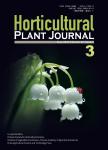Optimization of Agrobacterium tumefaciens-Mediated Transformation Systems in Tea Plant(Camellia sinensis)
Optimization of Agrobacterium tumefaciens-Mediated Transformation Systems in Tea Plant(Camellia sinensis)作者机构:Tea Research InstituteNanjing Agricultural University Tea Research InstituteFujian Academy of Agricultural Sciences
出 版 物:《Horticultural Plant Journal》 (园艺学报(英文版))
年 卷 期:2017年第3卷第3期
页 面:105-109页
核心收录:
学科分类:0710[理学-生物学] 09[农学] 090203[农学-茶学] 0902[农学-园艺学]
基 金:supported financially by the China Earmarked Fund for Modern Agro-industry Technology Research System (CARS-23) Jiangsu Provincial Agricultural Project (SXGC018) Fudiyingcai Talent Project of Jurong (2014) the Priority Academic Program Development of Jiangsu Higher Education Institutions Jiangsu Provincial Project of Research and Practice on the Teaching Reform of Postgraduate Education (JGLX15_111) the Teaching Research Project of College of Horticulture of Nanjing Agricultural University
主 题:Camellia sinensis cotyledon callus Agrobacterium-mediated GUS transient expression transformation ratio
摘 要:In this study, an efficient plant regeneration protocol in vitro and transformation by Agrobacterium-mediated method of Camellia sinensis was achieved, which would lay the foundation for genetic improvement of tea plant by genetic engineering technology. The cotyledon callus of C.sinensis were used as the receptors for transformation by Agrobacterium tumefaciens EHA105 containing PS1aG-3. Some factors which affected the result of Agrobacterium-mediated transformation of C. sinensis were studied on the basis of GUS transient expression system. The optimum system of Agrobacterium-mediated transformation was that the cotyledon callus were pre-cultured for 3 d, and then infected by EHA105 for 15 min followed by 3 d co-culture in the dark on the YEB medium containing 150 μmol·L^(-1) acetosyringone(AS). The transient expression rate of GUS gene was 62.6%. After being delayed selective culture for 3 d, infected callus were transferred into the differentiation medium and the root induction medium both of which were supplemented with 100 mg·L^(-1) spectinomycin, and then resistant seedlings of C. sinensis were obtained. The conversion rate was 3.6%.



